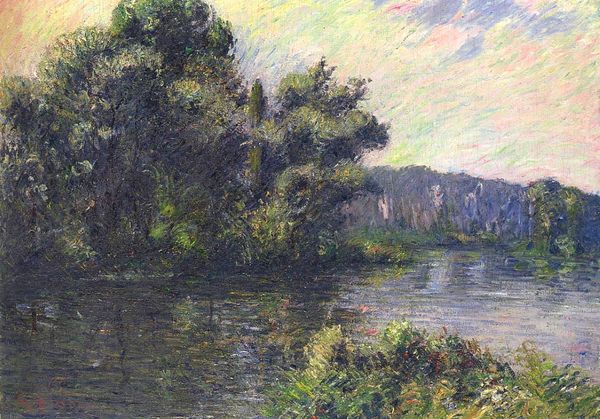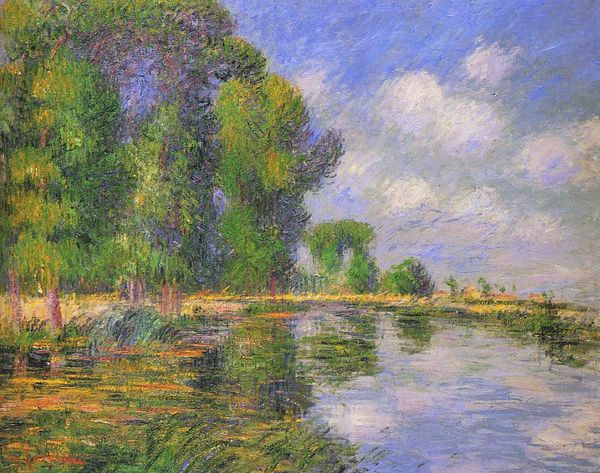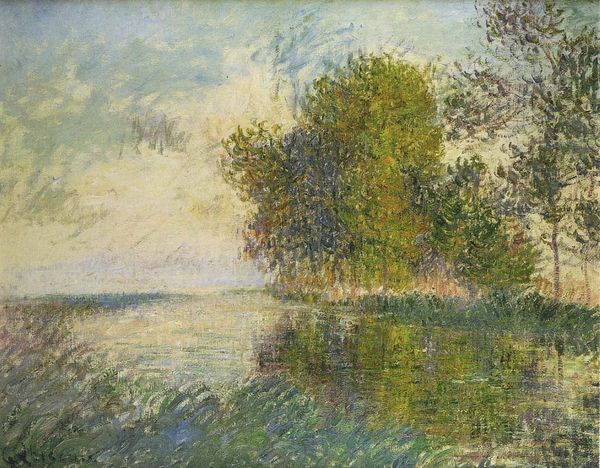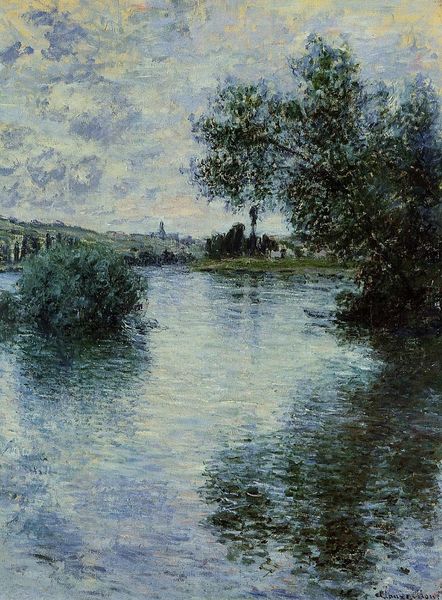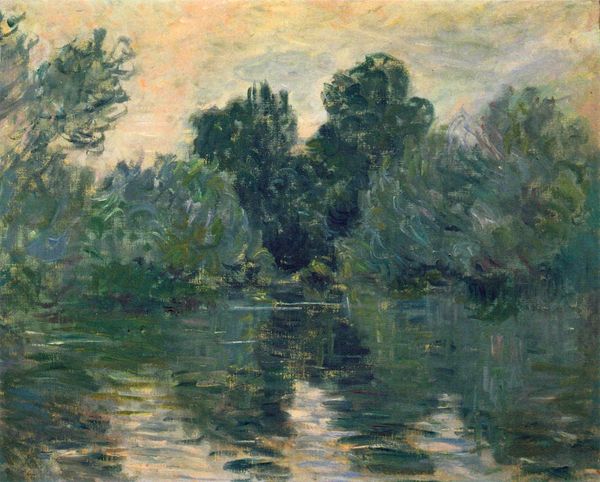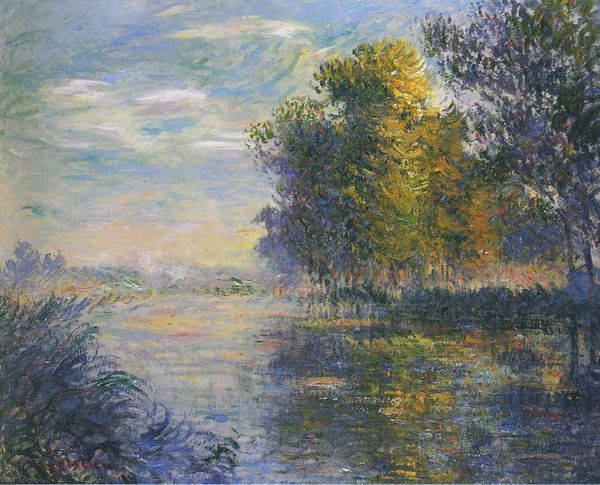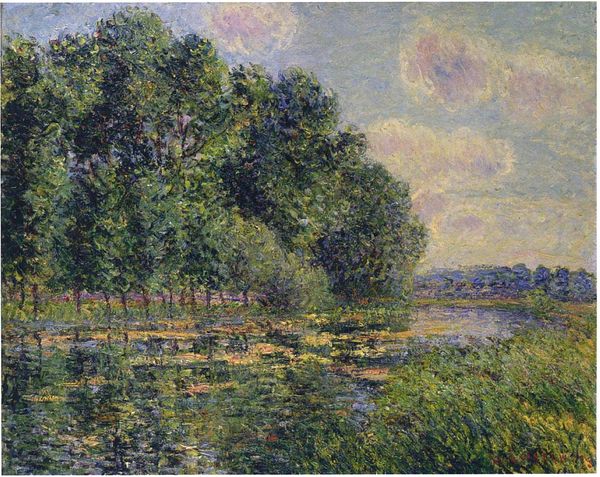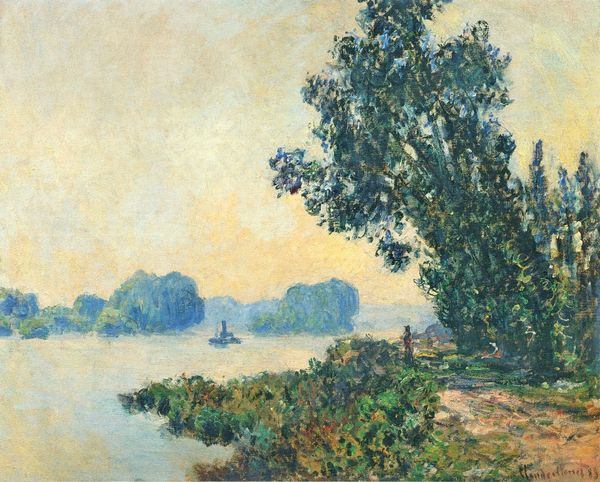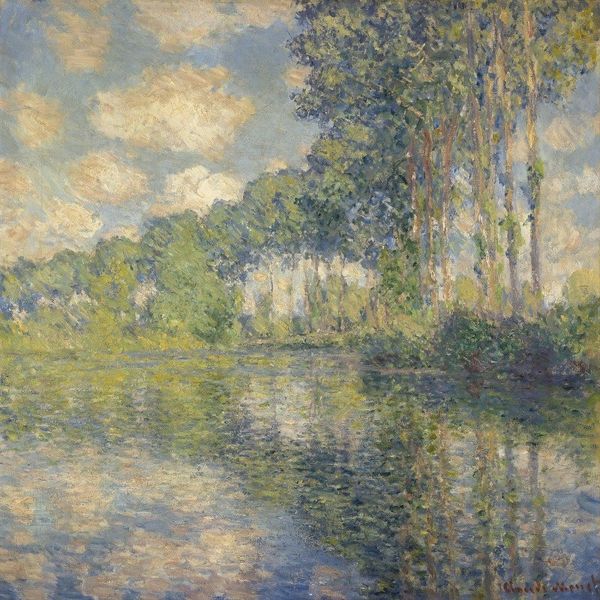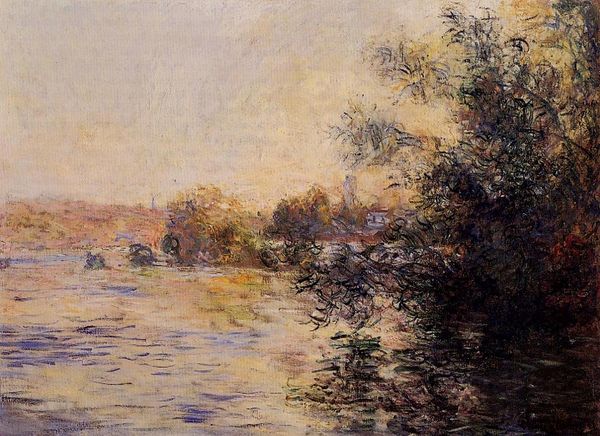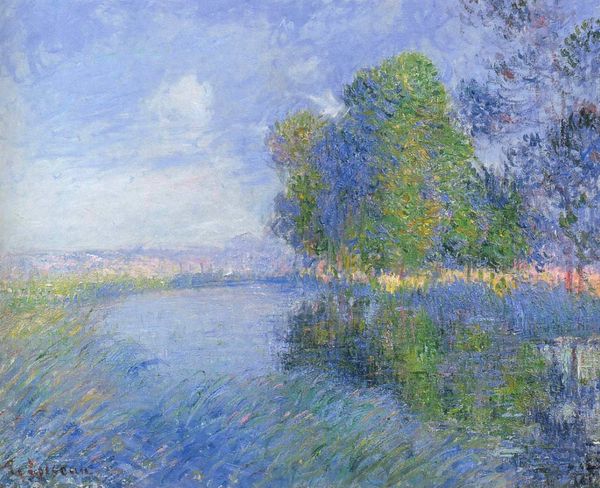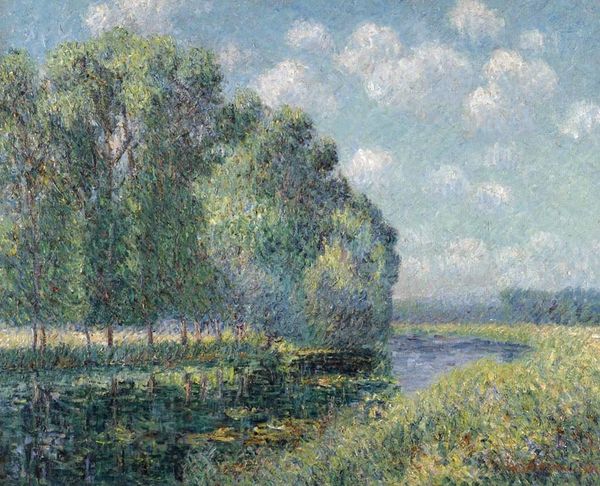
Dimensions: 70.8 x 81.28 cm
Copyright: Public domain
Curator: "River Bend in Normandy," painted around 1910 by Gustave Loiseau. The materials listed cite oil paint, a medium notably favored by Impressionists to work "en plein-air." What are your first thoughts? Editor: It feels…peaceful, doesn't it? That soft light, the reflected trees in the water. The image evokes serenity. It’s almost dreamlike in its composition. Curator: Absolutely. Loiseau belonged to the tail end of the Impressionist movement and he seemed dedicated to depicting not just the 'what' of a landscape but the 'how.' How can the surface of a river capture fleeting light and form? Editor: Yes, water as a mirror and a canvas for the world is one way it has been understood in many cultural traditions. Reflective surfaces, be they water or polished metal, often represent transitional states or points of access between realms in myth. Does the symbolism of water tie to production and reception of landscape in this period? Curator: An interesting angle. In terms of the making of it, Loiseau's technique seems rooted in repetitive touches. We see countless tiny strokes, seemingly simple when applied individually, that aggregate to create dense foliage and atmospheric conditions. One can see the labor in the facture, in the repetitive actions performed by hand. Editor: Right, you notice that industrious labor while I'm seeing how the water has that mirrored quality representing, on a symbolic level, self-reflection, contemplation... it all resonates in this composition and era of art. One cannot deny its symbolism is tied to reflection, liminal space and nature as a portal of change. Curator: Precisely. It's as if the act of painting itself, with each small deliberate mark, echoes the ongoing movement of water, and the persistent energy required for agricultural labour or any kind of production from nature. I guess we find ways of reading into an artwork depending on where our focus is aimed. Editor: I would concur, but in this case, I'd propose, we’re ultimately saying related things. Loiseau uses symbolic devices rooted in the culture of his period even as he creates this material product in his 'fieldwork.' Curator: A point well made. Looking closely allows for the experience of layers of work, memory, and nature reflected back at the viewer. Editor: Indeed, revealing so much depth through apparent simplicity.
Comments
No comments
Be the first to comment and join the conversation on the ultimate creative platform.

